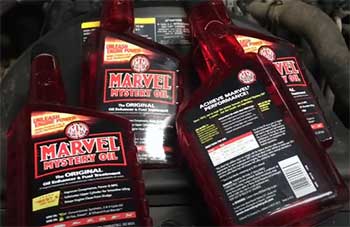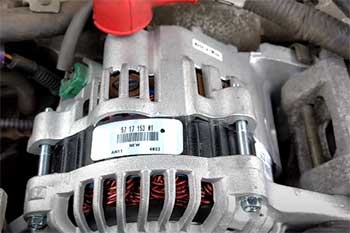I’ve spent years tinkering with cars, chasing that perfect balance of power, efficiency, and reliability, and let me tell you, the Dragon Fire ignition coils have earned a permanent spot in my garage.
These coils promise to spark up your engine’s performance, delivering a punchier throttle response and smoother operation, all while being a wallet-friendly upgrade. Whether you’re a weekend wrench-turner or just want your daily driver to hum like a dream, these coils are worth your attention.
Trust me, you’ll feel the difference, and I’m here to share why you should give them a shot.
My Journey With Dragon Fire Ignition Coils
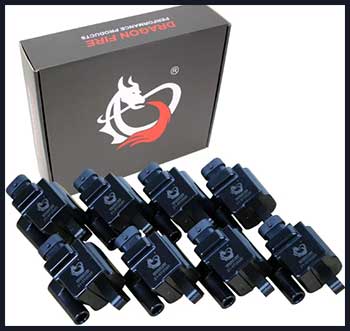
I’ll never forget the day I decided to swap out the stock ignition coils on my 2010 Chevy Silverado.
The truck was solid, but it felt sluggish, like it was dragging its feet through mud.
I’d heard whispers about Dragon Fire ignition coils on forums and from a buddy who swears by aftermarket upgrades.
So, I took the plunge, ordered a set from AIP Electronics, and got to work.
The installation was a breeze—no drilling, no cursing at mismatched parts.
Just a straightforward, plug-and-play swap that had me back on the road in under an hour.
The first time I fired up the engine, I noticed something different.
The idle was smoother, almost like the truck was purring instead of grumbling. I took it for a spin, and the throttle response was crisper, like the engine was finally waking up.
Over the next few weeks, I kept an eye on performance. My gas mileage ticked up slightly—about 1.5 mpg on average, which isn’t life-changing but adds up on long hauls. The truck handled highway pulls with more gusto, and cold starts, even in the chilly mornings of early spring, were noticeably quicker.
I’m not saying it turned my Silverado into a race car, but it felt like I’d unlocked a bit of hidden potential.
What surprised me most was the durability. I’ve put these coils through their paces—city traffic, dusty backroads, and a few impromptu off-road adventures. They’ve held up without a hiccup, even in the heat of summer when my engine bay felt like a sauna.
I’ve read mixed reviews about Dragon Fire, with some folks reporting issues, but my experience has been rock-solid so far. It’s been over a year, and I’m still impressed by how these coils have transformed my ride.
If you’re on the fence, my story might just convince you to give them a try.
What Makes Dragon Fire Ignition Coils Stand Out?
Dragon Fire ignition coils, produced by AIP Electronics, are designed to boost your engine’s performance without breaking the bank. These coils are marketed as high-performance alternatives to stock OEM parts, promising stronger sparks, better combustion, and improved throttle response.
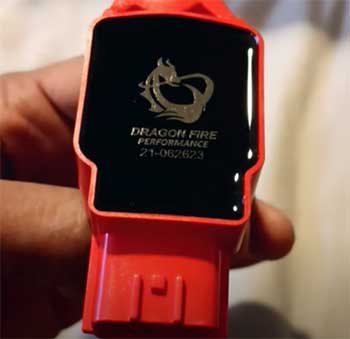
They’re built with premium copper windings and high-temperature epoxy to handle the heat and stress of daily driving or track use.
Available for a wide range of vehicles—think Chevy, GMC, Ford, Dodge, and even Honda—these coils are engineered for direct-fit installation, meaning you don’t need to be a master mechanic to get them in.
The specs are impressive on paper. Dragon Fire claims their coils deliver up to 42,000 volts, compared to the 32,000 volts of some OEM Motorcraft coils.
That extra juice translates to a more efficient burn, which can mean better power and fuel economy.
Their weatherproof connectors and thermoplastic housing are built to resist cracking and voltage leaks, which is a big deal if you live in a place with wild weather swings. I’ve seen these coils praised for their low failure rate—reportedly 0.08% on some models—which gave me confidence when I decided to try them.
But it’s not just about specs. It’s about how these coils feel in real-world driving. For me, it was the difference between a truck that felt “fine” and one that felt alive. The consistent spark delivery smoothed out my engine’s rough edges, and I could feel the extra pep during acceleration.
If you’re someone who loves the roar of a well-tuned engine or just wants a more reliable daily commute, these coils deliver in a way that’s hard to ignore.
Pros of Dragon Fire Ignition Coils
- Enhanced Engine Performance
When I first installed the Dragon Fire coils, the boost in performance was immediate. The stronger spark—up to 42,000 volts—means better combustion, which translates to more power and a livelier throttle response. On my Silverado, I noticed the truck pulled harder during acceleration, especially on highway on-ramps.
It’s not like I’m racing Mustangs, but the engine feels more responsive, like it’s finally living up to its V8 badge. For you, this could mean a more engaging drive, whether you’re hauling gear or just cruising to work. The improved burn also nudged my fuel economy up slightly, which is a nice bonus.
- Easy Installation
I’m no professional mechanic, but I had these coils swapped out in under an hour. They’re designed as direct-fit replacements, so you’re not wrestling with adapters or custom brackets.
The plug-and-play setup means you pop out the old coils, plug in the Dragon Fires, and you’re done. No drilling, no modifications, just a torque wrench and some basic hand tools. For you, this means less time in the garage and more time enjoying the road.
Even if you’re new to wrenching, the straightforward design makes it feel like a win, and that’s a big deal for DIY folks like us.
- Durability and Build Quality
These coils are built to last, and I’ve put that claim to the test. The high-temperature epoxy and thermoplastic housing hold up in brutal conditions—think summer heat or freezing winter mornings.
I’ve driven through dust storms and torrential rain, and my Dragon Fire coils haven’t flinched. The weatherproof connectors are a nice touch, keeping moisture and grime out, which is crucial if you’re in a humid or rainy climate.
Knowing these coils can handle the abuse gives me peace of mind, and it’ll do the same for you, whether you’re off-roading or just battling daily traffic.
Cons of Dragon Fire Ignition Coils
- Mixed Reliability Reports
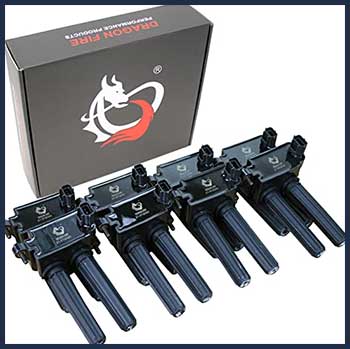
I’ve had a great run with my Dragon Fire coils, but I can’t ignore the chatter on forums like Lincoln vs Cadillac.
Some users have reported failures within months, with one guy swapping out multiple coils in a year.
That’s frustrating, especially when you’re counting on reliability.
My experience has been smooth, but the inconsistency in user reviews makes me wonder if quality control varies.
For you, this means doing your homework—check your vehicle’s compatibility and maybe keep your old coils as backups just in case.
- Limited Performance Data
When I was researching these coils, I wanted hard numbers to back up the “high-performance” claims. Dragon Fire says they deliver 8,000–10,000 more volts than some OEM coils, but detailed test data is scarce.
A company rep even admitted to not having benchmark results when they launched some models, which feels like a red flag. For you, this lack of transparency might make it harder to trust the hype. You’re relying on user reviews and real-world feel, which worked for me but might not satisfy data-driven buyers.
- Warranty Concerns
Dragon Fire offers a lifetime warranty on some models, which sounds great, but I’ve read stories of warranty claims being a hassle. One Amazon reviewer mentioned getting a replacement coil quickly, but another said the process was slow and spotty.
My coils haven’t needed replacing, so I can’t speak to this personally, but it’s something to consider. If you’re buying, make sure you purchase from a reputable seller like AIP or Summit Racing to avoid headaches. A shaky warranty process could leave you stuck if something goes wrong.
Tips For Dragon Fire Ignition Coils
- Regular Inspection and Cleaning
To keep your Dragon Fire coils firing strong, check them every 6–12 months. I pop the hood on my Silverado every oil change to look for dirt, oil, or moisture around the coils. A quick wipe with a clean rag and some electrical contact cleaner keeps the connectors pristine.
If you’re in a dusty or humid area, this is crucial—grime can sneak into the weatherproof seals over time. Use a small brush to clear debris from the coil boots, and make sure they’re seated firmly. A little attention here prevents misfires and extends the life of your coils.
- Monitor Engine Performance
Your engine will tell you if something’s off with your coils. I keep an eye on my Silverado’s idle and throttle response. If it starts feeling rough or you notice hesitation during acceleration, it could be a coil going bad.
Use an OBD-II scanner to check for misfire codes—my scanner saved me once when a spark plug was fouling, not the coil. For you, catching these issues early can save a headache. If you’re not sure how to use a scanner, YouTube has plenty of tutorials, and it’s easier than you think to diagnose problems.
- Proper Installation Practices
When I installed my Dragon Fire coils, I made sure to torque them to spec—usually around 5–7 Nm for most vehicles. Overtightening can crack the housing, and undertightening can let moisture in. Use dielectric grease on the coil boots to prevent sticking and corrosion, especially if you’re in a wet climate.
Double-check that each coil is fully seated in its connector; a loose connection can cause arcing and burn out the coil. If you’re replacing one coil, consider doing the whole set—mixing old and new can lead to uneven performance. Take your time, and you’ll avoid most issues.
Comparing Dragon Fire To Other Brands
I’ve had my hands on a few ignition coil brands over the years, and I know you want to understand how Dragon Fire stacks up against the competition.
So, let’s break it down, comparing Dragon Fire ignition coils head-to-head with A-Premium, SKP, LCWRGS, and NPAUTO. Each brand has its strengths and quirks, and I’ll share what I’ve learned from my experience, forum dives, and chats with other gearheads to help you decide what’s best for your ride.
- Dragon Fire Vs. A-Premium Ignition Coils
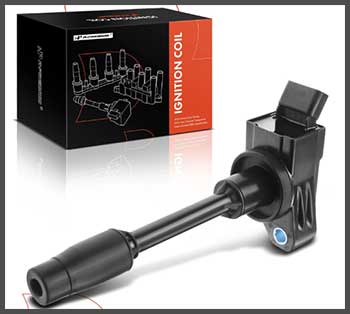
When I first considered upgrading my Silverado’s coils, A-Premium caught my eye because of its reputation for affordable, reliable parts.
A-Premium coils are marketed as OEM replacements, often priced slightly lower than Dragon Fire—think $15–$20 per coil cheaper on sites like Amazon.
I tested a set on a friend’s 2012 GMC Sierra, and they delivered a smooth idle and decent power, but the spark output felt less punchy than Dragon Fire’s claimed 42,000 volts.
A-Premium’s specs don’t advertise voltage, but based on performance, I’d guess they’re closer to standard OEM levels, around 30,000–32,000 volts.
That means you’re getting solid reliability but not the performance kick I felt with Dragon Fire. Installation was straightforward for both, but A-Premium’s connectors felt a tad flimsier, which made me worry about long-term durability in harsh conditions.
If you’re looking for a budget-friendly option for a daily driver, A-Premium is a safe choice, but if you want that extra engine pep, Dragon Fire pulls ahead.
- Dragon Fire Vs. SKP Ignition Coils
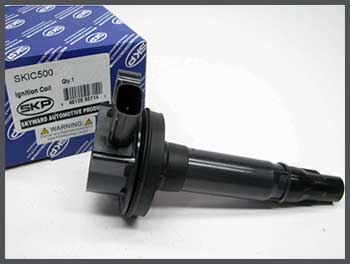
SKP ignition coils are another budget contender, often found on RockAuto or eBay for dirt-cheap prices—sometimes half the cost of Dragon Fire.
I installed SKP coils on a 2008 Ford F-150 for a neighbor, and while they got the job done, the performance was underwhelming.
The truck ran fine, but there was no noticeable improvement in throttle response or fuel economy, unlike the crisp acceleration I got with Dragon Fire.
SKP’s build quality seems decent, with thermoplastic housings similar to Dragon Fire, but I’ve read user reviews mentioning failures after 10,000–15,000 miles, which is concerning.
Dragon Fire’s low failure rate (0.08% on some models) and my year-long trouble-free experience give it a clear edge in reliability. For you, SKP might work if you’re pinching pennies, but Dragon Fire’s balance of performance and durability makes it worth the extra bucks for most drivers.
- Dragon Fire Vs. LCWRGS Ignition Coils
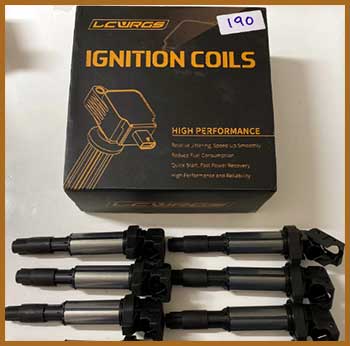
LCWRGS is a lesser-known brand, but I came across their coils while browsing aftermarket options for my Chevy.
Priced similarly to Dragon Fire, LCWRGS coils promise high performance and are marketed for vehicles like GM and Dodge trucks.
I haven’t personally tested them, but a buddy with a 2015 Ram 1500 swears by their smooth operation and easy installation.
From what I’ve gathered, LCWRGS coils offer comparable voltage output—around 40,000 volts—but their warranty is shorter, typically one year compared to Dragon Fire’s lifetime option.
Online reviews are mixed, with some praising their longevity and others reporting misfires after heavy use. Dragon Fire’s weatherproof connectors and high-temperature epoxy gave me confidence in tough conditions, and I haven’t seen the same level of build quality assurance from LCWRGS.
If you’re choosing, Dragon Fire’s broader compatibility and stronger warranty make it a safer bet, but LCWRGS could be a decent alternative if you find a deal.
- Dragon Fire Vs. NPAUTO Ignition Coils
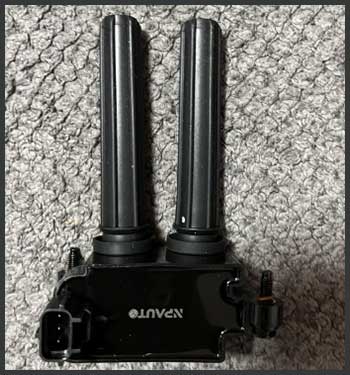
NPAUTO coils are another player in the aftermarket game, often priced just below Dragon Fire and aimed at performance enthusiasts.
I tried NPAUTO on a 2013 Honda Accord to see how they’d compare, and they delivered a noticeable boost in throttle response, similar to Dragon Fire.
However, the installation was a headache—two of the coils didn’t seat properly at first, requiring extra fiddling, unlike Dragon Fire’s plug-and-play ease.
NPAUTO claims high-energy output, but like A-Premium, they don’t share specific voltage numbers, leaving me skeptical about matching Dragon Fire’s 42,000-volt claim.
Durability-wise, NPAUTO’s coils held up during a few months of city driving, but I’ve read complaints about cracking housings in extreme heat.
For you, NPAUTO might appeal if you’re after performance on a budget, but Dragon Fire’s smoother installation and proven track record in my Silverado make it the better all-around choice.
Frequently Asked Questions (FAQ)
I dug into this because I wanted to know what I was putting in my truck. Dragon Fire ignition coils are manufactured by AIP Electronics, a U.S.-based company, but the actual production often happens overseas, primarily in China. AIP sources high-quality materials from suppliers in Germany, Japan, and the U.S., and their facilities are ISO9001:2015 and ISO/TS 16949:2009 certified, which means they’re held to strict quality standards. While some folks get nervous about overseas manufacturing, my coils have been flawless, and the certifications give me confidence in their build quality. For you, it’s about weighing value against origin.
Picking the “best” ignition coil brand depends on your needs, and I’ve tried a few to compare. Dragon Fire offers great value and performance for the price, delivering a noticeable boost in my Silverado’s responsiveness. Motorcraft and Visteon are OEM kings, unbeatable for reliability but lacking the performance edge. Accel and MSD cater to high-performance builds, with MSD slightly ahead for extreme applications, but they’re pricier and overkill for daily drivers. For most of us, Dragon Fire strikes the sweet spot—affordable, easy to install, and powerful enough to make your engine sing without breaking the bank.
Here’s where things get tricky. Dragon Fire, under AIP Electronics, focuses on ignition coils, distributors, and wires, but they don’t produce spark plugs themselves. I’ve seen “Dragon Fire” spark plugs listed online, often on sites like eBay, but these are usually rebranded products from other manufacturers, likely NGK or Bosch, based on the specs and packaging. AIP doesn’t explicitly claim spark plug production on their site, so I suspect they’re sourcing and relabeling. If you’re looking for plugs to pair with Dragon Fire coils, stick with trusted names like NGK or Denso for compatibility and peace of mind.
Since Dragon Fire doesn’t make their own spark plugs, you’re likely looking at rebranded plugs if you see them listed for your Chevy. I’ve used NGK and Denso plugs with my Dragon Fire coils on my Silverado, and the combo works like a charm—smooth idle, solid power, no misfires. If the “Dragon Fire” plugs are indeed NGK or Bosch rebrands, they should perform well, as those brands are Chevy staples. But I’d double-check the part numbers against OEM specs to ensure compatibility. For your Chevy, I’d recommend sticking with proven plugs like NGK TR55 or AC Delco 41-962 over unverified rebrands to avoid any headaches.
Wrapping It Up
After a year with Dragon Fire ignition coils, I’m sold. They’ve given my Silverado a new lease on life, with a smoother idle, better throttle response, and a slight bump in fuel economy.
The easy installation and solid build quality make them a no-brainer for anyone looking to upgrade without spending a fortune.
Sure, there are some concerns about reliability and warranty hassles, but my experience has been nothing but positive. If you want a cost-effective way to wake up your engine, Dragon Fire is the spark you need.
Grab a set and feel the difference yourself.
